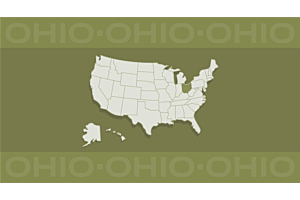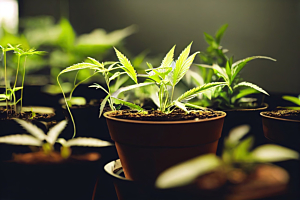Cultivating marijuana is an enjoyable and rewarding experience. Knowing how to increase terpenes in cannabis makes a big difference to the final results, creating a more pleasant-tasting bud. Enhancing these compounds provide your nugs with stronger aromas and flavor. When marijuana has a high terpene concentration, it also offers more potent effects.
Are you ready to know how to increase terpenes in weed and utilize techniques to produce a bountiful yield of fragrant and potent buds?
Let's dive in.
What are terpenes, and how do they affect cannabis plants?
Terpenes define the smell of many plants, herbs, and flowers, giving marijuana its characteristic aroma, flavor, and effects profile. Knowing how to increase terpenes in your buds enhances these aspects for a greater smoking experience. These compounds are abundant in cannabis, with over 150 different kinds. They exist in minimal concentrations, but the most prominent ones work together to give different weed strains distinct fragrance profiles.
Terpenes are essential in the survival of plants as they emit a powerful scent that repels herbivores and insects. These compounds also provide a variety of medicinal and pleasurable sensations to users.
The science of increasing terpenes in weed
Below, we discuss tips to guide you on a rewarding journey to increase terpenes in your cannabis buds.
Grow your plant in quality "living" soil
Soil assists in maintaining optimal alkaline pH levels and improves uptake of nutrients which boosts the overall development, health, and flavor of cultivars. According to cultivators, nothing's better for growing cannabis than high-grade living soil. The term 'living' refers to the presence of bacteria, fungus, amoeba, earthworms, and beneficial insects.
These organisms constantly decompose waste to use as nourishment by weed cultivars. This soil type is natural and utilized by growers to optimize the marijuana plant’s health and terpenes. Using good quality soil for outdoor weed is the best way to increase terpenes and maximize yields when cultivating.
Optimize your grow room with UVA & UVB lights
Choosing the correct cannabis grow lights in indoor setups is paramount to enhancing yields, potency, and aroma. Marijuana farmers mostly use HPS and LED lamp sources. These lights contain almost no UV, which helps improve trichomes, cannabinoids, and flavonoid synthesis, which UV exposure doesn’t. Exposure to UVA and UVB light boosts THC and CBD levels—another example of how to increase terpenes in your weed crops.
Stress your plant to maximize terpenes (but don't go overboard)
Stressing plants causes the trichomes to adjust and increase development to protect themselves, leading to more flavorful and potent buds. Here are some quick tips to boost terpene concentrations:
- Pinching part of the branches is a simple approach to mildly stressing a cannabis plant. Place the stem between your index and thumb and squeeze hard. Twist and manipulate the limbs to shift their growth direction.
This strategy increases terpenes throughout a plant, as a grower may adjust branches to let light reach previously shaded parts.
- Undercutting is another excellent method of low-stress training. This technique requires removing foliage from a plant's lower level, where it's shadowed and receives little light.
Using this method, growers direct the crops’ energy into the main budding sites during the flowering phase. Undercutting also stresses the plant sufficiently, which stimulates its natural terpene synthesis.
Mind the temperature in bloom and flushing
Controlling temperature and humidity are among the most vital elements when growing cannabis indoors to prevent heat stress and crop damage. Optimal temperatures in the growing area must be between 70–80℉ during the vegetation phase but lowered to 68℉ when flowering begins.
Many gardeners feel that utilizing lower temperatures in the evening when crops begin flowering and during flushing is beneficial. Colder temperatures help conserve and are one of the best ways to increase terpenes in marijuana plants.
Keep an eye on your humidity
The best humidity for weed is between 40–70% indoors and depends on the cultivar's growth stage. Lowering the humidity to around 40% in the last few weeks of flowering minimizes mold and humidity issues and increases terpenes. If your setup becomes very humid, invest in a dehumidifier. This equipment lowers humidity and raises the temperature in a room. Growers employ cooling systems like air-conditioning and fans to avoid overheating.
Avoid excessive fertilizer and flush your plant
Marijuana requires several nutrients to thrive, but the primary three that contribute most to bud production are nitrogen, phosphorus, and potassium. Want to know how to increase terpenes in cannabis in the final flowering stages? In the last weeks of bloom, cultivars focus more on generating cannabinoids and flavonoids inside the trichomes and buds. Using minimal nitrogen and a moderate amount of phosphorus helps enhance natural and unique fragrances and flavor.
Avoid overfeeding crops' nutrients during the flowering phase, which can ruin the outcome of terpenoids and potency production. Adding moderate phosphorus levels is suitable for sustaining optimal trichome development. It's crucial to flush crops a week or two before harvesting—remove all fertilizers and simply feed clean water for a week or two. This technique allows your cultivar to absorb what's left in the cell walls, resulting in a more natural, unique taste and scent.
Not everyone supports flushing, believing it may strip plants of critical nutrients during the last stages of flowering. The choice here is yours.
The magic of blue light treatment
Many cultivators use blue light in the last week of the flowering phase, as this is one of the best ways to increase terpenes. This light encourages crops to concentrate their metabolic energy on producing more flavorful and aromatic buds. Using blue light produces minimal yield size, but it enhances the buds’ bouquet of terpenes. Those who have adjustable LED lights can benefit from switching to blue light.
Consider your trichomes to know the best harvest time
Terpenes are sensitive compounds that can deteriorate quickly. Harvesting too soon or too late might ruin the outcome of the terpene profile. Increasing trichome production in cannabis helps produce an enhanced flavor, better scent, and higher THC buds. Harvest when virtually all clear trichomes have turned milky colored for the best quality weed buds with potent psychoactive effects. Waiting until at least part of the milky pistils turn amber delivers a more soothing and anti-anxiety bud.
It’s all about genetics
Instead of attempting to develop top-shelf cannabis from just any seeds, seek high-grade and renowned genetics as a way to increase terpenes. Some weed strains have more dominant terpene concentrations than others. Certain cultivars have an herbal, musky scent, and others have a lemony, fruity, or tropical taste and smell. The quality of your seeds and strain influence your buds' aroma and taste profile.
Below, we look at the best weed seeds with high terpene profiles:
Orange Bud
These feminized seeds are indica-dominant, spend 8–10 weeks flowering, and deliver moderate yields with 15–20% THC levels. Orange Bud feminized offers an energizing cerebral high paired with a soothing body calm, making it a marijuana enthusiast's delight. Upon lighting up these buds, expect tastes and aromas of zest, rich floral notes, and undertones of spice and wood. This cultivar stretches up to 4ft tall and produces plentiful yields indoors and out. Want to know how to increase terpenes and terpenoids in the Orange Bud strain? Drop temperatures in the flowering phase during the evening.
Skunk strains
The buds from Skunk seeds deliver a blend of cerebral bliss and physical pleasure. Connoisseur growers who seek top-quality buds with a vibrant and aromatic terpene palate love these cannabis seeds. These strains are also popular among inexperienced cultivators due to their easy-growing nature. Skunk genetics are incredibly resilient and adaptive to different climates. Consider using fabric pots, growing in living soil, a mixture coco coir, and cultivating indoors with UVB or UVA lights. These tips boost root aeration, aid in healthy development, deliver full yields, and are the best ways to increase terpenes.
Blue strains
Our Blue strain seeds are known for producing crops with vivid hues, fragrant buds, and high THC content. Expect deeply satisfying effects, a rich berry flavor, and stunning blue colors in your crops. The aesthetic appeal of these brightly colored buds compliments the powerful, euphoric, and joyous sensations. Users report anxiety and worry fade fast under the soothing effects of these plants. In the hands of an experienced grower, blue strains produce over 20% THC. Cannabis cultivars grown with UVB and stress techniques may have a higher cannabinoid content and increase terpenes.
Boost your experience with increased terpenes
The best approach to boosting effects and sensory profile in cannabis is to optimize your grow environment, lighting, and strain choice. Terpene compounds supply cannabis with its distinct aroma and induce specific pleasurable and relaxing effects. To boost your crop's flavor profile, use UVA or UVB bulbs that provide a wide range of illumination.
Regardless of your growth strategy, too many nutrients can negatively impact terpenes and the potency of buds. Checking on your cultivar's trichomes to decide the best time to harvest is an excellent way to conserve the terpene profile. Now that you know how to increase terpenes visit our store to purchase premium-quality seeds to cultivate at home. We offer discreet shipping and delivery and a variety of secure payment options.











